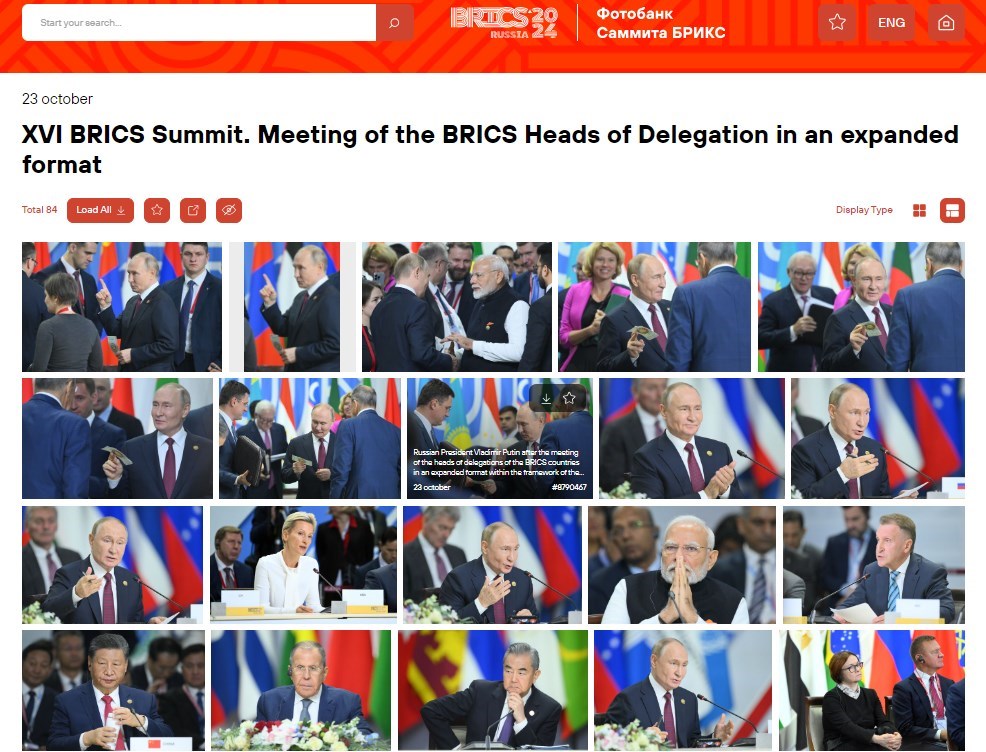During the October 2024 summit in Kazan, Russia, the BRICS nations aimed to enhance economic autonomy by rethinking the payment systems utilized in international trade, emphasizing a reduced reliance on the US dollar. Online rumors, fueled by social media, circulated that during the summit, Russian President Vladimir Putin had introduced a new “BRICS currency” meant to rival the dollar. However, this assertion was founded on a misunderstanding; while Putin indeed advocated for a financial system that facilitates trade in local currencies among BRICS member states, there was no official introduction of a new currency. The image that triggered these misleading claims depicted Putin holding what was described as a banknote, which turned out to be symbolic rather than an actual new currency.
Throughout the BRICS summit, representatives from 36 countries and six international organizations convened to discuss pressing global economic issues and strengthen ties. This meeting marked a significant moment for the bloc, as it included recent expansions, bringing their membership to ten with the addition of nations like Egypt, Ethiopia, Iran, Saudi Arabia, and the UAE. As the summit concluded, BRICS released a comprehensive 33-page document titled the “Kazan Declaration,” outlining the collective strategy for improved governance and cooperative economic strategies. However, a careful examination of the declaration shows that it did not establish any resolutions regarding the creation of a unified currency.
Analysis of the declaration indicated that the primary focus was on encouraging cross-border transactions using member nations’ local currencies. One of the key points urged the development of stronger banking connections within BRICS to facilitate local currency settlements, aligning with their BRICS Cross-Border Payments Initiative (BCBPI). This initiative is framed as voluntary and nonbinding, allowing for future discussions rather than immediate binding agreements on a singular currency. Thus, the suggestion that a consolidated or official BRICS currency was revealed during the summit is misleading.
The image prompting the currency speculation depicted Putin humorously gesturing with a mock banknote toward Indian Prime Minister Narendra Modi. This photo garnered considerable attention on social media, where it was misrepresented as proof of a new BRICS currency. However, upon further scrutiny, it was discovered that the so-called banknote was a symbolic item handed to Putin by an attendee, intended merely as a gesture rather than a legitimate currency offering. Putin’s press secretary clarified that this “quasi-money” was printed for symbolic purposes, debunking the widespread belief that it represented an unveiling of a new financial standard.
Historically, claims about a BRICS currency have circulated previously, notably during the 2023 summit held in South Africa, where images of alleged currency notes were similarly mischaracterized. These claims had been thoroughly debunked by fact-checkers, who emphasized that no official legal tender had been established for BRICS countries. Notably, the currency imagery from the previous summit bore similarity to the one in 2024, creating a narrative continuity around the idea of a BRICS currency, despite the lack of concrete development towards such a financial unit.
Overall, the keen ambition of the BRICS nations to formulate an alternative payment system reflects their effort to fortify economic independence in a global market significantly influenced by the US dollar. However, the definitive announcement of a singular BRICS currency remains unfounded, as articulated by various official documents and statements from summit attendees. Instead, the emphasis looks to be on fostering a collaborative financial framework among member states, promoting localized trade without the need for a new, consolidated currency. The continued speculation around a BRICS currency, despite clear denials and explanations, illustrates the complexities in communicating collaborative economic strategies in an age dominated by rapid information dissemination and the potential for misunderstanding.

